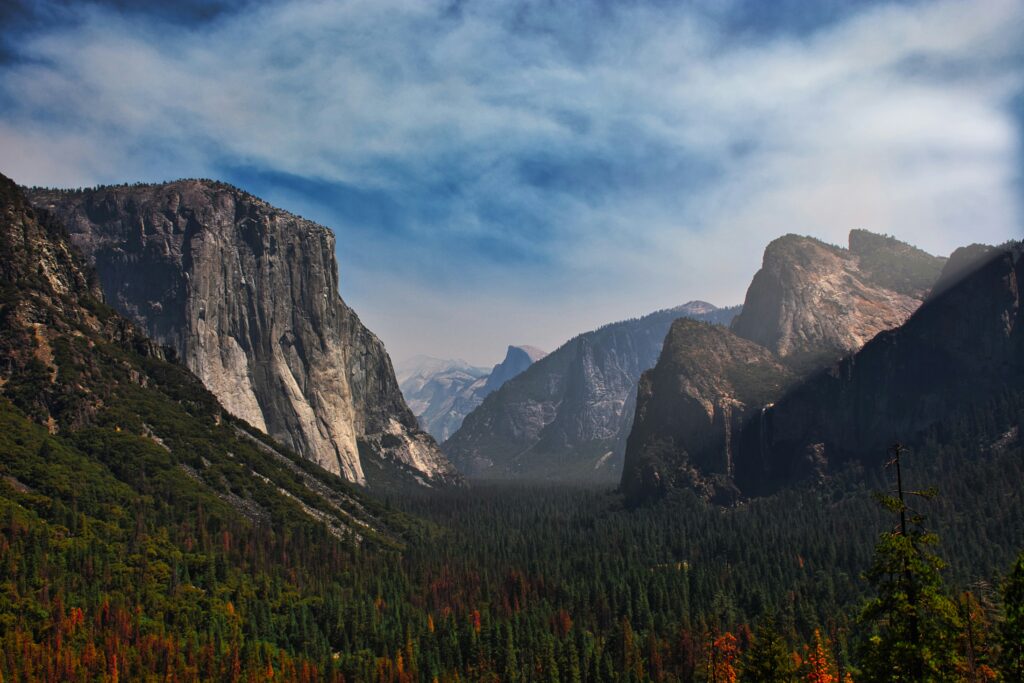
When planning a trip to one of the stunning U.S. national parks, one of the questions that frequently pops up is about mobile data reliability. After all, who wants to venture into the breathtaking wilderness only to find that their favorite apps and navigation tools are as useless as a hiker without a map? In this guide, we’re diving into the nitty-gritty of mobile data in national parks, giving you the lowdown on what to expect and how to prepare. So, buckle up—let’s explore!
Understanding Coverage in National Parks
First things first: not all national parks are created equal when it comes to cell service. Some parks have a decent amount of coverage, especially those that are close to urban areas, while others can feel like you’ve stepped into a black hole.
Major Parks with Good Coverage
If you’re headed to places like Yosemite or Yellowstone, you’ll find that major areas of these parks have reliable coverage. For instance, in Yellowstone, Verizon users report decent service near popular spots like Old Faithful. However, once you venture further away from these hubs, things can get dicey.
More Remote Parks
Now, if your plans include some of the more remote parks—think Big Bend in Texas or Glacier in Montana—be prepared for a different story. Many hikes in these locations may have you cutting off from civilization, and your data may not follow. It’s best to download any maps or important info before you go, just in case.
Which Carriers Are Best?
Your choice of mobile carrier can also make a world of difference in your data reliability. Here’s a little breakdown:
Verizon
Often recognized as the leader when it comes to nationwide coverage, Verizon boasts extensive networks even in remote areas. Users frequently report better experiences in places like the Grand Canyon or Great Smoky Mountains.
AT&T
AT&T is another solid choice for travelers, especially with improved coverage in parks. Many customers find AT&T reliable in regions like the Shenandoah National Park.
T-Mobile
T-Mobile can be hit or miss. While it’s robust in urban areas, its performance in rural parks might leave you scratching your head—maybe even longing for a landline.
Practical Tips for Keeping Data Reliability Up
Okay, so you know where you’re going and your carrier options. What now? Here are some practical tips to prep for your national park adventure:
Download Maps and Apps Beforehand
This can’t be stressed enough. Downloading offline maps from platforms like Google Maps or hiking-specific apps such as AllTrails will be invaluable. Trust me, it’s like packing an extra snack for the trail—you’ll be glad you did.
Keep Your Devices Charged
Nothing’s worse than realizing your battery is at 20% just when you need to access a crucial map or emergency contact. Bring a portable charger and solar-powered charger if you’re going on longer hikes. Plus, use your phone’s battery saver mode when you know you’ll be off the grid for a while.
Stay Updated on Alerts
Many national parks provide apps that not only give you info about the park but also keep you updated on alerts and conditions. It’s a good idea to download these apps to stay informed about potential trail closures or safety issues.
Alternatives to Mobile Data
Sometimes, relying on your cell signal simply won’t cut it. Here are some other strategies:
Invest in a GPS Device
If you’re serious about hiking, consider investing in a handheld GPS device. These don’t rely on cellular data and can provide reliable navigation even in the heart of the wilderness. They’re handy for check-ins too—just in case someone wants to know where you’ve wandered off to!
Portable Wi-Fi Hotspots
Consider renting or buying a portable Wi-Fi hotspot. Some services offer good coverage in remote areas, although they come with their own costs and limitations. Just check reviews first to see if they’re worth the investment in the parks you’re visiting.
The Importance of Planning Ahead
Before you even set out for your adventure, spend some time researching the park’s connectivity. Look into forums or blogs where other travelers have shared their experiences with data signals in specific areas. This way, you’ll enter the park knowing what to expect… and what to prepare for!
Communicate Your Plans
If you’re heading out into the backcountry and will be out of touch for a while, let someone know your plans. It’s a simple step, but a crucial one for safety. Share your itinerary and expected return time, so someone can raise the alarm if you don’t check back in.
Wrap-Up
While you might not be able to count on mobile data in every nook and cranny of the U.S. national parks, a little planning ahead can save you a lot of headaches. Downloading maps, choosing the right carrier, and having backup plans like GPS devices are key to staying connected—or at least finding your way back!
So, as you pack your bags for that epic trip to the great outdoors, remember: nature is beautiful, but it doesn’t always come with a full signal. Happy travels!
Related: Check out this National Park Service page for more tech-related tips in the parks.
**Related Reading:** – [Related: How to Plan a Solo Trip on a Budget] – [Related: Top Destinations for First-Time Solo Travelers] **#SoloTravel #Ultimate #Guide #Mobile #Data #Reliability #U.S #National #Parks #Traveler**
